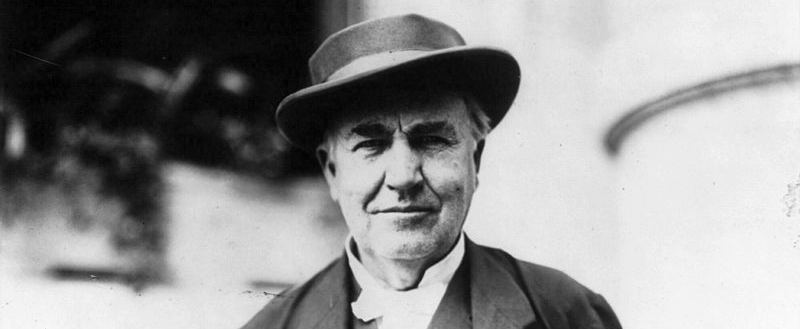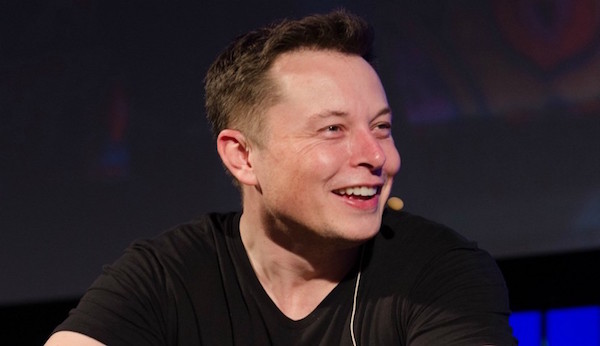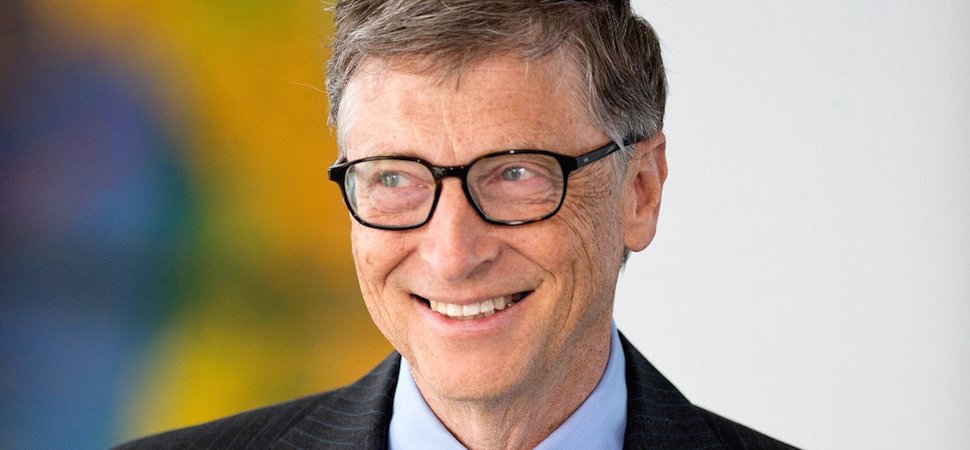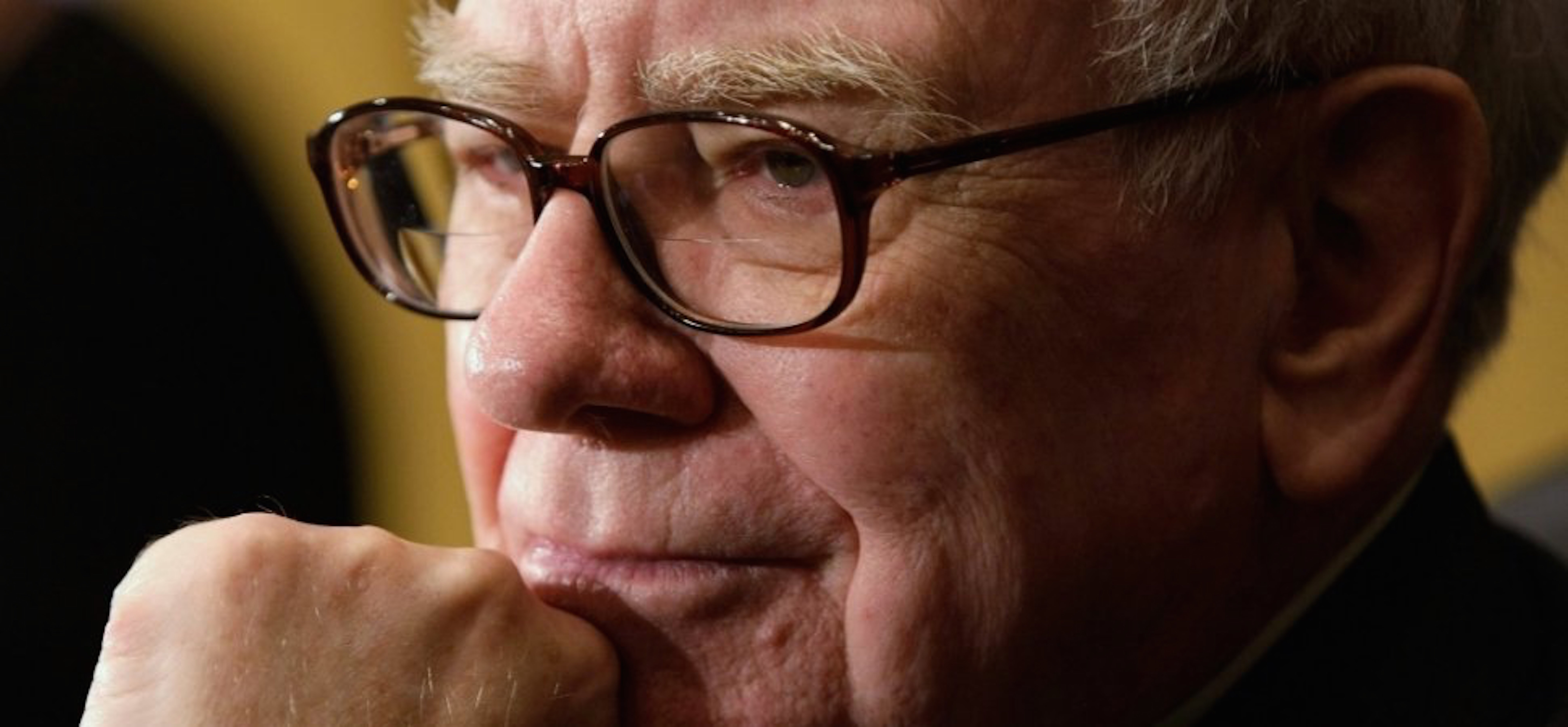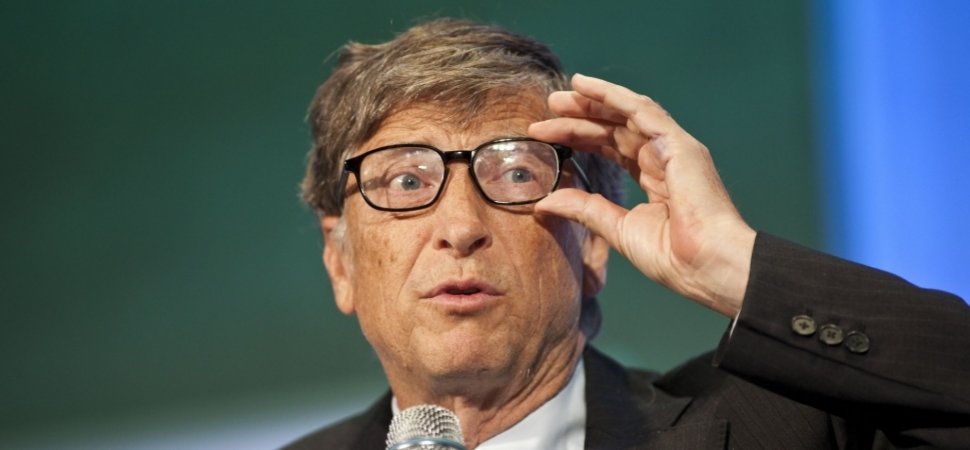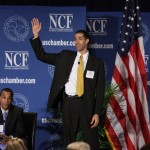Why Successful People Spend 10 Hours A Week On “Compound Time”
Warren Buffett, Albert Einstein, Oprah Winfrey all do this one thing outside their to-do-lists everyday.
One question has fascinated me my entire adult life: what causes some people to become world-class leaders, performers, and changemakers, while most others plateau?
I’ve explored the answer to this question by reading thousands of biographies, academic studies, and books across dozens of disciplines. Over time, I’ve noticed a deeper practice of top performers, one so counterintuitive that it’s often overlooked.
One question has fascinated me my entire adult life: what causes some people to become world-class leaders, performers, and changemakers, while most others plateau?
I’ve explored the answer to this question by reading thousands of biographies, academic studies, and books across dozens of disciplines. Over time, I’ve noticed a deeper practice of top performers, one so counterintuitive that it’s often overlooked.
Despite having way more responsibility than anyone else, top performers in the business world often find time to step away from their urgent work, slow down, and invest in activities that have a long-term payoff in greater knowledge, creativity, and energy. As a result, they may achieve less in a day at first, but drastically more over the course of their lives.
I call this compound time because, like compound interest, a small investment now yields surprisingly large returns over time.

Warren Buffett, for example, despite owning companies with hundreds of thousands of employees, isn’t as busy as you are. By his own estimate, he has spent 80 percent of his career reading and thinking.
At the 2016 Daily Journal annual meeting, Charlie Munger, Buffett’s 40-year business partner, shared that the only scheduled item on his calendar one week was getting his haircut and that most of his weeks were similar. This is the opposite of most people who are overwhelmed with short-term deadlines, meetings, and minutiae.
Ben Franklin once wisely said: “An investment in knowledge pays the best interest.” Perhaps the source of Buffett’s true wealth is not just the compounding of his money, but the compounding of his knowledge, which has allowed him to make better decisions. Or as billionaire entrepreneur, investor, and philanthropist Paul Tudor Jones has eloquently said, “Intellectual capital will always trump financial capital.”
To build your own intellectual capital, here are six compound time activities that you can start incorporating into your life immediately:
Hack #1: Keep a journal. It could change your life.
Many top performers go beyond open-ended reflection: they often combine specific prompts with a physical journal.
Each morning, Benjamin Franklin asked himself, “What good shall I do this day?” and each evening, “What good have I done today?” Steve Jobs stood at the mirror each day and asked, “If today were the last day of my life, would I want to do what I am about to do?” Both billionaire Jean Paul DeJoria and media maven Arianna Huffington takes a few minutes each morning to count their blessings. Oprah Winfrey does the same: she starts each day with her gratitude journal, noting five things for which she’s thankful.
Billionaire entrepreneur and investor Reid Hoffman asks himself questions about his thinking before bed: What are the kind of key things that might be constraints on a solution, or might be the attributes of a solution? What are the tools or assets I might have? What are the key things that I want to think about? What do I want to solve creatively? Grandmaster chess player and world champion martial artist Josh Waitzkin has a similar process, “My journaling system is based around studying complexity. Reducing the complexity down to what is the most important question. Sleeping on it, and then waking up in the morning first thing and pre-input brainstorming on it. So I’m feeding my unconscious material to work on, releasing it completely, and then opening my mind and riffing on it.”
Whenever legendary management consultant Peter Drucker made a decision, he wrote down what he expected to happen; several months later, he’d compare the results with his expectations. Leonardo da Vinci filled tens of thousands of pages with sketches and musings on his art, inventions, observations, and ideas. Albert Einstein amassed more than 80,000 pages of notes in his lifetime. Former President John Adams kept over 51 journals throughout his life.
Ever notice that after writing about your thoughts, plans, and experiences, you feel clearer and more focused? Researchers call this “writing to learn.” It helps us bring order and meaning to our experiences and becomes a potent tool for knowledge and discovery. It also augments our ability to think about complex topics that have dozens of interrelated parts, while our brain, by itself, can only manage three in any given moment. A review of hundreds of studies on writing to learn showed that it also helps with what’s called metacognitive thinking, which is our awareness of our own thoughts. Metacognition is a key element in performance.
Hack #2: Naps can dramatically increase learning, memory, awareness, creativity, and productivity.
Pulling from the results of more than a decade of experiments, nap researcher Sara Mednick of the University of California, San Diego, boldly states: “With naps of an hour to an hour and a half… you get close to the same benefits in learning consolidation that you would from a full eight hour night’s sleep.” People who study in the morning do about 30% better on an evening test if they’ve had an hour-long nap than if they haven’t.
Albert Einstein broke up his day by returning home from his Princeton office at 1:30 p.m., having lunch, taking a nap, and then waking with a cup of tea to start the afternoon. Thomas Edison napped for up to three hours per day. Winston Churchill considered his late afternoon nap non-negotiable. John F. Kennedy ate his lunch in bed before drawing the curtains for a one- to two-hour nap. Others who swore by daily naps include Leonardo Da Vinci (up to a dozen 10-minute naps a day), Napoleon Bonaparte (before battles), Ronald Reagan (every afternoon), Lyndon B. Johnson (30 minutes a day), John D. Rockefeller (every day after lunch), Margaret Thatcher (one hour a day), Arnold Schwarzenegger (every afternoon), and Bill Clinton (15–60 minutes a day).
Modern science confirms that napping makes us not only more productive, but also more creative. Maybe that’s why greats such as Salvador Dali, chess grandmaster Josh Waitzkin, and Edgar Allen Poe used naps to induce hypnagogia, a state of awareness between sleep and wakefulness that helped them access a deeper level of creativity.
Hack #3: Only 15 minutes of walking per day can work wonders.
Top performers also build exercise into their daily routine. The most common form is walking.
Charles Darwin went on two walks daily: one at noon and one at 4 p.m. After a midday meal, Beethoven embarked on a long, vigorous walk, carrying a pencil and sheets of music paper to record chance musical thoughts. Charles Dickens walked a dozen miles a day and found writing so mentally agitating that he once wrote, “If I couldn’t walk fast and far, I should just explode and perish.” Philosopher Friedrich Nietzsche concluded, “It is only ideas gained from walking that have any worth.”
Others who made a habit of walking include Gandhi (took a long walk every day), Jack Dorsey (takes a five-mile walk each morning), Steve Jobs (took a long walk when he had a serious talk), Tory Burch (45 minutes a day), Howard Schultz (walks every morning), Aristotle (gave lectures while walking), neurologist and author Oliver Sacks (walked after lunch), and Winston Churchill (walked every morning upon waking).
Now we have scientific data proving what these geniuses intuited: taking a walk refreshes the mind and body, and increases creativity. It can even extend your life. In one 12-year study of adults over 65, walking for 15 minutes a day reduced mortality by 22%.
Hack #4: Reading is one of the most beneficial activities we can invest in
Here’s an amazing truth: no matter our circumstances, we all have equal access to the favorite learning medium of Bill Gates, the richest person in the world: books.
Top performers in all areas take advantage of this high-powered, low-cost way to learn.
Winston Churchill spent several hours a day reading biographies, history, philosophy, and economics. Likewise, the list of U.S. presidents who loved books is long: George Washington, Thomas Jefferson, Abraham Lincoln, and JFK were all voracious readers. Theodore Roosevelt read one book a day when busy, and two to three a day when he had a free evening.
Other lumineer readers include billionaire entrepreneur Mark Cuban (three-plus hours a day), billionaire entrepreneur Arthur Blank (two-plus hours a day), billionaire investor David Rubenstein (six books a week), billionaire entrepreneur Dan Gilbert (one to two hours a day), Oprah Winfrey (credits reading for much of her success), Elon Musk (read two books a day when he was younger), Mark Zuckerberg (a book every two weeks), Jeff Bezos (read hundreds of science fiction novels by the time he was 13), and CEO of Disney Bob Iger (gets up every morning at 4:30 a.m. to read).
Reading books improves memory, increases empathy, and de-stresses us, all of which can help us achieve our goals. Books compress a lifetime’s worth of someone’s most impactful knowledge into a format that demands just a few hours of our time. They provide the ultimate ROI.
Interested in reading more? I recorded a webinar to help you to find the time to read and double your return on learning.
Hack #5: Conversation partners lead to surprising breakthroughs
In Powers Of Two: Finding the Essence of Innovation in Creative Pairs, author and essayist, Joshua Shenk, makes the case that the foundation of creativity is social, not individual. The book reviews the academic research on innovation, highlighting creative duos from John Lennon and Paul McCartney to Marie and Pierre Curie to Steve Jobs and Steve Wozniak.
During long daily walks, psychologists Daniel Kahneman and Amos Tversky developed a new theory of behavioral economics that won Kahneman the Nobel Prize. J.R.R. Tolkien and C.S. Lewis shared their work with each other and set aside Mondays to meet at a pub. Francis Crick and James Watson, the co-discoverers of the structure of DNA, batted ideas back and forth relentlessly, both in their shared office and during daily lunches in Cambridge. Crick recalled that if he presented a flawed idea, “Watson would tell me in no uncertain terms this was nonsense, and vice-versa.” Artists Andy Warhol and Pat Hackett took two hours each morning to “do the diary” together: recounting the previous day’s activities in detail.
Many greats made a habit of conversing in large, ritualized groups. Theodore Roosevelt’s “Tennis Cabinet” included friends and diplomats who exercised together daily and debated the issues facing the country. Benjamin Franklin created a “mutual improvement society” called the Junto that gathered each Friday evening to learn from each other. The Vagabonds were a group of four famous friends — Henry Ford, Thomas Edison, Harvey Firestone, and John Burroughs — who took road trips each summer: camping, climbing, and “sitting around the campfire discussing their various scientific and business ventures and debating the pressing issues of the day.”
Hack #6: Success is a direct result of the number of experiments you perform
There’s a reason that Jeff Bezos says, “Our success at Amazon is a function of how many experiments we do per year, per month, per week, per day….”
One big winner pays for all of the losing experiments. In a recent SEC filing, he explains why:
“Given a ten percent chance of a 100 times payoff, you should take that bet every time. But you’re still going to be wrong nine times out of ten. We all know that if you swing for the fences, you’re going to strike out a lot, but you’re also going to hit some home runs. The difference between baseball and business, however, is that baseball has a truncated outcome distribution. When you swing, no matter how well you connect with the ball, the most runs you can get is four. In business, every once in awhile, when you step up to the plate, you can score 1,000 runs.”
No matter how much you read and discuss, you’re still going to have to spend some time making your own mistakes. If that discourages you, just remember Thomas Edison. It took him more than 50,000 botched experiments to invent the alkaline storage cell battery, and 9,000 to perfect the light bulb. But at his death, he held nearly 1,100 U.S. patents.
Experiments don’t just happen in the “real” world. Our brain has an incredible ability to simulate reality and explore possibilities at a much faster rate and lower cost. Einstein used thought experiments (imagining himself chasing a light beam through space, for instance) to help construct breakthrough scientific theories; you can use them to set your imagination free on slightly smaller conundrums. The journals of Thomas Edison, Leonardo da Vinci, and other luminaries aren’t just filled with writing, they’re also filled with sketches and mind maps.
Standup comedy is a far cry from inventing, but experimentation is just as key in the arts as it is in science. Take a star comedian like Chris Rock, for instance. Rock prepares for huge shows in venues such as Madison Square Garden by piecing his routine together in small clubs for months on end, trying out new material and getting instant feedback from audiences (they either laugh or they don’t).
Others use experiments to force them to take on new habits or break unhealthy ones. Iconic producer and writer Shonda Rhimes decided to take on her workaholism and extreme introversion and say yes to everything that scared her in an experiment she called the Year of Yes. Jia Jang confronted the universal fear of rejection with his 100 Days of Rejection project, which he then catalogued on YouTube. College grad Megan Gebhart spent the first year of her career taking one person a week out for coffee; she compiled the lessons she learned in a book called 52 Cups of Coffee. Filmmaker Sheena Matheiken wore the same black dress every day for a year as an exercise in sustainability.
As Ralph Waldo Emerson said, “All life is an experiment. The more experiments you make, the better.”
Interested in jumping right into becoming a deliberate experimenter? After studying how dozens of the world’s most prolific experimenters have created experimentation engines, we spent dozens of hours creating a free mini-course that includes five email lessons and a webinar to help you be successful with the 10,000-experiment rule. Click here to sign up for the mini-course.
Go Ahead, Take That Hour Now
In a world where everyone is speeding up and cramming their schedule to get ahead, the modern knowledge worker should do the opposite: slow down, work less, learn more, and think long-term.
In a world where frantic work is the focus, top performers should focus deliberately on learning and rest. In a world where artificial intelligence is automating more and more of our work, we should unleash our creativity. Creativity is not unleashed by working more, but by working less.
It’s easy to say to yourself, “Sure! Warren Buffett can do it because… well…. he’s Warren Buffett.” But don’t forget that Warren Buffett has had his learning ritual for his entire career, way before he was the Warren Buffett we know today. He could have easily fallen into the trap of the constant “busy-ness,” but instead, he made three crucial decisions:
- Ruthlessly remove the busy work in order to rise above incessant urgent deadlines, meetings, and minutiae.
- Spend almost all of his time on compound time, things that create the most long-term value.
- Tap dance the work because he leverages his unique strengths and passions.
This lifestyle may not happen for you overnight, but in order to leverage compound time, you first need to believe that a lifestyle where you work less but accomplish more is possible and beneficial; that a lifestyle where you ruthlessly focus on your strengths and passions is not only feasible, but necessary.
To get started, follow the 5-hour rule: for an hour a day, invest in compound time: take that nap, enjoy that walk, read that book, have that conversation. You may doubt yourself, feel guilty or even worry you’re “wasting” time… You’re not! Step away from your to-do list, just for an hour, and invest in your future. This approach has worked for some of the world’s greatest minds. It can work for you, too.
Successful People Are Not Necessarily Smarter. They Just Do More Of This.
This is how you build world-class expertise in any field.
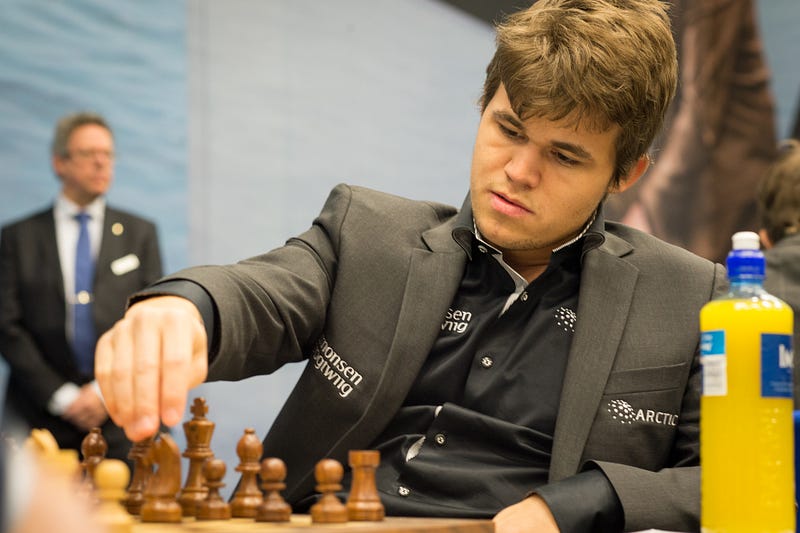
Photo Credit: Frans Peeters
Imagine this…
You’re playing speed chess… with a blindfold… with multiple games going at once.
At the 2015 Sohn conference, the highest-ranked chess player in history, Magnus Carlsen, did exactly this, and it’s a feat to behold.
Carlsen quickly makes his moves (navigating 60,000+ possible chess moves in his mind) while his opponents flounder.

Source: Magnus Carlsen Blind & Timed Chess Simul at the Sohn Conference in NYC
Carlsen’s first win is a checkmate. His second is a resignation. The final opponent loses on time!
If you’re like me, when you see feats like this, you wonder:
How can I perform like this in my own field?
This article answers that question.
You can use the same principle that Carlsen uses to master chess, to master your field and become more successful.
How is that possible? The short answer is chunking. Professor Barbara Oakley, co-instructor of Learning How To Learn — the largest course in the entire world in any subject — has this to say about chunking: “I’m becoming increasingly convinced that ‘chunking’ is the mother of all learning — or at least the fairy godmother… Creating neural patterns — ‘neural chunks’ — underpins the development of all expertise.”
Experts like Carlsen learn how to harness this power through thousands of hours of deliberate practice.
Here’s the full breakdown on why chunking is one of the most important parts to becoming a world-class expert.
Explainer: How Chunking Happens
Think about when you first started learning to read (or when you see a child learning to read). Although you didn’t realize it, you were chunking!
The first phase was learning that these random shapes you were seeing were actually a new concept called letters. You combined multiple things into one new thing. That is the essence of chunking. In this case, you combined shapes into a new chunk called letters.

As you developed mastery of letters, you learned that they could be combined into a new concept called words and that these words could be accessed automatically.

Over time, you continued additional levels of chunks. You realized that words could form word groups, which could form clauses, which could form sentences, which could ultimately form stories.
And voila! You suddenly had a new magical ability: the ability to read. You no longer had to sound out each letter. Where there used to be randomness, you now saw order.
When you build more and more complex chunks upon chunks, you gain new abilities. The only reason that reading isn’t considered magical is because so many people can do it. World-class experts, on the other hand, follow the same process, but they just focus on areas of expertise that few other people have mastered and they spend more time in the mastery process.
How Magnus Carlsen Chunks
This takes us back to Magnus Carlsen and his no-longer-magical ability to play blindfolded speed chess.
Carlsen isn’t memorizing each individual piece on each individual square on each chessboard, which would mean memorizing millions of possibilities. That would be truly magical. Instead, he’s using an ability that we all have: the ability to form and use complex chunks. Through years of deliberate practice and chunking, Carlsen:
- Has memorized tens of thousands of complex chunks: still a large number, but much more tenable!
- Is able to automatically and rapidly access those chunks through his intuition.
This explains why he can move fast while his opponents are brooding over where to move next. They haven’t built up enough chunks yet, so they need to consciously examine each possible move and go through all of the implications.
Just how important chunking is was discovered in a landmark study. The researchers had novice and expert participants view a chess position for a few seconds and then reconstruct it from memory.
In the first experiment, the position was one that could appear in a real game, and experts far outperformed novices. In the second experiment, the chessboard was arranged randomly in a way that would never happen in a real game. The grandmasters immediately lost their edge. They could no longer use their saved chunks.
More recently, researcher Daniel Simons replicated the experiment with chess grandmaster Patrick Wolff and posted it on Youtube. Wolff’s attempt in the random position is almost pathetic. In the real position, it is a miracle. Only two pieces are misplaced, and they’re only misplaced by one square.

Also, notice how Wolff describes the feeling when he’s chunking. Rather than describing the process of working with chunks as difficult, mechanical, or deliberate, he describes it as flowing and unconscious. This is a hallmark of mastery.
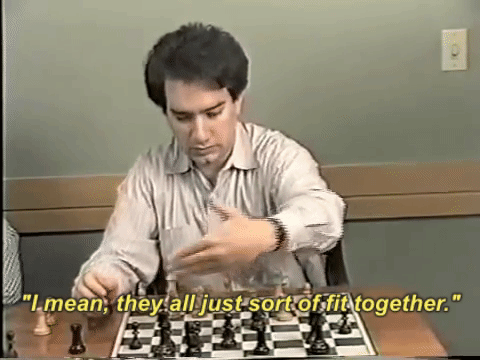
Chess grandmaster Josh Waitzkin further unpacks what this process feels like in his seminal book, The Art Of Learning:
… over time the intuition learns to integrate more and more principles into a sense of flow. Eventually the foundation is so deeply internalized that it is no longer consciously considered, but is lived.
He later adds…
[A] great pianist or violinist does not think about individual notes, but hits them all perfectly in a virtuoso performance. In fact, thinking about a ‘C’ while playing Beethoven’s 5th Symphony could be a real hitch because the flow might be lost.
What It Means For Us: Why Mastery Takes So Long
Learning the concept of chunking is both exhilarating and disheartening.
It’s exhilarating because it shows us how we can develop superpowers in our field if we stay committed. With just one building block at a time, we become an expert over time.
It’s disheartening because it shows us why building world-class expertise is a process that takes thousands of hours of practice in most fields. Just like a pyramid is built with individual bricks, starting from the foundation and moving up, so too is our expertise. Every chunk is one brick.
In order to learn a single chunk, we must:
- Understand what its building blocks are.
- Understand how they connect into a new concept.
- Practice using the concept so much that it becomes automatic.
Sure, it’s possible to increase the speed at which we build our mental pyramids. Also, some people are hardwired to learn these chunks faster. But either way, if we bypass the process and don’t build a strong foundation, the overall pyramid becomes weaker.
How To Build Chunks In Your Daily Life With The 5-Hour Rule
Dedicating time to chunking is not as hard as it sounds. Simply setting an hour aside per day for deliberate learning compounds over time. I call this the 5-hour rule, and I learned it by observing the deliberate learning rituals of some of the world’s top entrepreneurs.
I may never attain the level of performance of a true prodigy like Carlsen, but because I am building up chunks of expertise every day, I’m able to see my performance constantly improve. Maybe one day, I will be a grandmaster in my field. This is potential that chunking gives us all.
Interested in creating a learning ritual in your life?
I created a free learning how to learn webinar you might like. It’s based on the learning best practices of the world’s top entrepreneurs and performers.
How Elon Musk Learns Faster And Better Than Everyone Else
To explain Musk’s success, others have pointed to his heroic work ethic (he regularly works 85-hour weeks), his ability to set reality-distorting visions for the future, and his incredible resilience.
But all of these felt unsatisfactory to me. Plenty of people have these traits. I wanted to know what he did differently.
As I kept reading dozens of articles, videos, and books about Musk, I noticed a huge piece of the puzzle was missing. Conventional wisdom says that in order to become world-class, we should only focus on one field. Musk breaks that rule. His expertise ranges from rocket science, engineering, physics, and artificial intelligence to solar power and energy.
In a previous article, I call people like Elon Musk “expert-generalists” (a term coined by Orit Gadiesh, chairman of Bain & Company). Expert-generalists study widely in many different fields, understand deeper principles that connect those fields, and then apply the principles to their core specialty.
Based on my review of Musk’s life and the academic literature related to learning and expertise, I’m convinced that we should ALL learn across multiple fields in order to increase our odds of breakthrough success.
The jack of all trades myth
If you’re someone who loves learning in different areas, you’re probably familiar with this well-intentioned advice:
“Grow up. Focus on just one field.”
“Jack of all trades. Master of none.”
The implicit assumption is that if you study in multiple areas, you’ll only learn at a surface level, never gain mastery.
The success of expert-generalists throughout time shows that this is wrong.Learning across multiple fields provides an information advantage (and therefore an innovation advantage) because most people focus on just one field.
For example, if you’re in the tech industry and everyone else is just reading tech publications, but you also know a lot about biology, you have the ability to come up with ideas that almost no one else could. Vice-versa. If you’re in biology, but you you also understand artificial intelligence, you have an information advantage over everyone else who stays siloed.
Despite this basic insight, few people actually learn beyond their industry.
Each new field we learn that is unfamiliar to others in our field gives us the ability to make combinations that they can’t. This is the expert-generalist advantage.
One fascinating study echoes this insight. It examined how the top 59 opera composers of the 20th century mastered their craft. Counter to the conventional narrative that success of top performers can solely be explained by deliberate practice and specialization, the researcher Dean Keith Simonton found the exact opposite: “The compositions of the most successful operatic composers tended to represent a mix of genres…composers were able to avoid the inflexibility of too much expertise(overtraining) by cross-training,” summarizes UPENN researcher Scott Barry Kaufman in a Scientific American article.
Musk’s “learning transfer” superpower
Starting from his early teenage years, Musk would read through two books per day in various disciplines according to his brother, Kimbal Musk. To put that context, if you read one book a month, Musk would read 60 times as many books as you.
At first, Musk’s reading spanned science fiction, philosophy, religion, programming, and biographies of scientists, engineers, and entrepreneurs.As he got older, his reading and career interests spread to physics, engineering, product design, business, technology, and energy. This thirst for knowledge allowed him to get exposed to a variety of subjects he had never necessarily learned about in school.
Elon Musk is also good at a very specific type of learning that most others aren’t even aware of — learning transfer.
Learning transfer is taking what we learn in one context and applying it to another. It can be taking a kernel of what we learn in school or in a book and applying it to the “real world.” It can also be taking what we learn in one industry and applying it to another.
This is where Musk shines. Several of his interviews show that he has a unique two-step process for fostering learning transfer.
Side note: Want to take your learning routine to the next level? I created a free learning how to learn webinar you might like.
First, he deconstructs knowledge into fundamental principles
Musk’s answer on a Reddit AMA describes how he does that:
It is important to view knowledge as sort of a semantic tree — make sure you understand the fundamental principles, i.e. the trunk and big branches, before you get into the leaves/details or there is nothing for them to hang onto.
Research suggests that turning your knowledge into deeper, abstract principles facilitates learning transfer. Research also suggests that one technique is particularly powerful for helping people intuit underlying principles. This technique is called, “contrasting cases.”
Here’s how it works: Let’s say you want to deconstruct the letter “A” and understand the deeper principle of what makes an “A” an A. Let’s further say that you have two approaches you could use to do this:
Which approach do you think would work better?
Approach #1. Each different A in Approach #1 gives more insight into what stays the same and what differs between each A. Each A in Approach #2 gives us no insight.
By looking at lots of diverse cases when we learn anything, we begin to intuit what is essential and even craft our own unique combinations.
What does this mean in our day-to-day life? When we’re jumping into a new field, we shouldn’t just take one approach or best practice. We should explore lots of different approaches, deconstruct each one, and then compare and contrast them. This will help us uncover underlying principles.
Next, he reconstructs the fundamental principles in new fields
Step two of Musk’s learning transfer process involves reconstructing the foundational principles he’s learned in artificial intelligence, technology, physics, and engineering into separate fields:
- In aerospace in order to create SpaceX.
- In automotive in order to create Tesla with self-driving features.
- In trains in order to envision the Hyperloop.
- In aviation in order to envision electric aircraft that take off and land vertically.
- In technology in order to envision a neural lace that interfaces your brain.
- In technology in order to help build PayPal.
- In technology in order to co-found OpenAI, a non-profit that limits the probability of negative artificial intelligence futures.
Keith Holyoak, a UCLA professor of psychology and one of the world’s leading thinkers on analogical reasoning, recommends people ask themselves the following two questions in order to hone their skills: “What does this remind me of?” and “Why does it remind me of it?”
By constantly looking at objects in your environment and material you read and asking yourself these two questions, you build the muscles in your brain that help you make connections across traditional boundaries.
Bottom line: It’s not magic. It’s just the right learning process
Now, we can begin to understand how Musk has become a world-class expert-generalist:
- He spent many years reading 60 times as much as an avid reader.
- He read widely across different disciplines.
- He constantly applied what he learned by deconstructing ideas into their fundamental principles and reconstructing them in new ways.
At the deepest level, what we can learn from Elon Musk’s story is that we shouldn’t accept the dogma that specialization is the best or only path toward career success and impact. Legendary expert-generalist Buckminster Fuller summarizes a shift in thinking we should all consider. He shared it decades ago, but it’s just as relevant today:
“We are in an age that assumes that the narrowing trends of specialization to be logical, natural, and desirable… In the meantime, humanity has been deprived of comprehensive understanding. Specialization has bred feelings of isolation, futility, and confusion in individuals. It has also resulted in the individual’s leaving responsibility for thinking and social action to others.Specialization breeds biases that ultimately aggregate as international and ideological discord, which in turn leads to war.”
If we put in the time and learn core concepts across fields and always relate those concepts back to our life and the world, transferring between areas becomes much easier and faster.
As we build up a reservoir of “first principles” and associate those principles with different fields, we suddenly gain the superpower of being able to go into a new field we’ve never learned before, and quickly make unique contributions.
Understanding Elon’s learning superpowers helps us gain some insight into how he could go into an industry that has been around for more than 100 years and change the whole basis of how the field competes.
Elon Musk is one of a kind, but his abilities aren’t magical.
Want to take to learn like Musk? I created a free learning how to learn webinar you might like. It’s based on the learning best practices of the world’s top entrepreneurs.
Why Constant Learners All Embrace the 5-Hour Rule
At the age of 10, Benjamin Franklin left formal schooling to become an apprentice to his father. As a teenager, he showed no particular talent or aptitude aside from his love of books.
When he died a little over half a century later, he was America’s most respected statesman, its most famous inventor, a prolific author, and a successful entrepreneur.
What happened between these two points to cause such a meteoric rise?
Underlying the answer to this question is a success strategy for life that we can all use, and increasingly must use.
The five-hour rule
Throughout Ben Franklin’s adult life, he consistently invested roughly an hour a day in deliberate learning. I call this Franklin’s five-hour rule: one hour a day on every weekday.
Franklin’s learning time consisted of:
- Waking up early to read and write
- Setting personal-growth goals (i.e., virtues list) and tracking the results
- Creating a club for “like-minded aspiring artisans and tradesmen who hoped to improve themselves while they improved their community”
- Turning his ideas into experiments
- Having morning and evening reflection questions

Every time that Franklin took time out of his busy day to follow his five-hour rule and spend at least an hour learning, he accomplished less on that day. However, in the long run, it was arguably the best investment of his time he could have made.
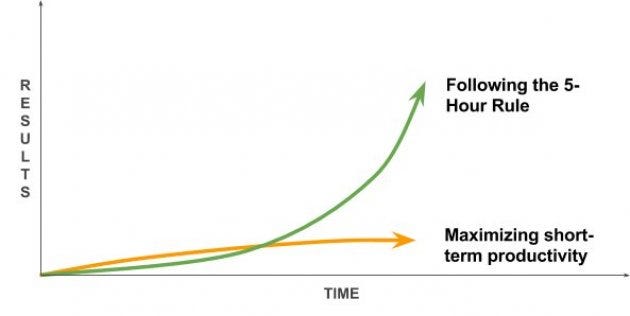
Franklin’s five-hour rule reflects the very simple idea that, over time, the smartest and most successful people are the ones who are constant and deliberate learners.
Warren Buffett spends five to six hours per day reading five newspapers and500 pages of corporate reports. Bill Gates reads 50 books per year. Mark Zuckerberg reads at least one book every two weeks. Elon Musk grew up reading two books a day, according to his brother. Oprah Winfrey credits books with much of her success: “Books were my pass to personal freedom.”Arthur Blank, co-founder of Home Depot, reads two hours day. Dan Gilbert, self-made billionaire and owner of the Cleveland Cavaliers, reads one to two hours a day.
So what would it look like to make the five-hour rule part of our lifestyle?
Empty space is central to the five-hour rule
To find out, we need look no further than chess grandmaster and world-champion martial artist Josh Waitzkin. Instead of squeezing his days for the maximum productivity, he’s actually done the opposite. Waitzkin, who also authored The Art of Learning, purposely creates slack in his day so he has“empty space” for learning, creativity, and doing things at a higher quality.Here’s his explanation of this approach from a recent Tim Ferriss podcast episode:
“I have built a life around having empty space for the development of my ideas for the creative process. And for the cultivation of a physiological state which is receptive enough to tune in very, very deeply to people I work with … In the creative process, it’s so easy to drive for efficiency and take for granted the really subtle internal work that it takes to play on that razor’s edge.”
Adding slack to our day allows us to:
1. Plan out the learning. This allows us to think carefully about what we want to learn. We shouldn’t just have goals for what we want to accomplish. We should also have goals for what we want to learn.
2. Deliberately practice. Rather than doing things automatically and not improving, we can apply the proven principles of deliberate practice so we keep improving. This means doing things like taking time to get honest feedback on our work and practicing specific skills we want to improve.
3. Ruminate. This helps us get more perspective on our lessons learned and assimilate new ideas. It can also help us develop slow hunches in order to have creative breakthroughs. Walking is a great way to process these insights, as shown by many greats who were or are walking fanatics, from Beethovenand Charles Darwin to Steve Jobs and Jack Dorsey. Another powerful way is through conversation partners.
4. Set aside time just for learning. This includes activities like reading, having conversations, participating in a mastermind, taking classes, observing others, etc.
5. Solve problems as they arise. When most people experience problems during the day, they sweep them under the rug so that they can continue their to-do list. Having slack creates the space to address small problems before they turn into big problems.
6. Do small experiments with big potential payoffs. Whether or not an experiment works, it’s an opportunity to learn and test your ideas.
The difference the five-hour rule makes
For many people, their professional day is measured by how much they get done. As a result, they speed through the day and slow down their improvement rate.
The five-hour rule flips the equation by focusing on learning first.
To see the implication of this, let’s look at a sales call (note: replace “sales call” with any activity you do repeatedly).
Most professionals do a little research before the call, have the call, and then save their notes and move on.
Somebody with a learning focus would think through which skill to practice on the call, practice it on the call, and then reflect on the lessons learned. If that person really wanted an extra level of learning, he or she would invite a colleague on the call and have the colleague provide honest feedback afterward.
Embracing a learning lifestyle means that every time we make a sales call, we get better at doing sales calls. keep improving them rather than plateauing. Every event is an opportunity to improve.
By focusing on learning as a lifestyle, we get so much more done over the long term.
So, are you ready to embrace the five-hour rule?
How about reading a book a week to get started? Even though he’s the richest man in the world and could afford to hire an army of teachers and consultants, Bill Gates still reads a book a week. In a 2016 New York Timesinterview, he said, “Reading is still the main way that I both learn new things and test my understanding.”
Want to read the most-recommended books by top leaders like Bill Gates, Mark Zuckerberg, Sheryl Sandberg, and Elon Musk? Here’s our report on the six highly recommended books you should read, along with 460-plus of their other book recommendations.
Want to find the time to read and actually remember and apply what you learn?I created a free learning how to learn webinar you might like. It’s based on the learning best practices of the world’s top entrepreneurs.
The Future Belongs To Leaders Who Get Artificial Intelligence
Overnight on October 14, 2015, Tesla introduced an semi-autonomous driving system for owners of the Model S. Within a day, owners began uploading videos of themselves being driven around…
Why the Smartest People Are Constant Learners
The Internet has been saturated by productivity porn.
We all love the idea of habits. Morning habits, afternoon habits, evening habits. We love it all. Do something over and over until it becomes so easy that you don’t even have to think about it.
The One Trait That Elon Musk, Ben Franklin, and Marie Curie Have In Common

Credit: Steve Jurvetson/Unknown/Joseph-Siffrein Duplessis
“Jack of all trades. Master of none.”
The warning against being a generalist has persisted for hundreds of years in dozens of languages.
“Equipped with knives all over, yet none is sharp,” warned people in China. In Estonia, it went, “Nine trades, the tenth one — hunger.”
Yet, many of the most impactful individuals — both contemporary and historical — have been generalists: Elon Musk, Steve Jobs, Arianna Huffington, Ben Franklin, Leonardo Da Vinci,and Marie Curie…
Inc: The Dumbest Mistake That Smart People Make

Image: Getty Images
It was a little past 1:00 a.m, and I sat alone at the dining room table. If only I had listened to my tired body and gone to sleep, I might have saved a friendship and a business partnership…
Inc: Here’s What We All Can Learn From The Bill Gates Article That’s Going Viral
10 days ago, an article was posted on Inc. called Bill Gates Predicted Today’s Technologies in 1999. It has already been shared 38,000+ times.
Have you ever wondered what makes some ideas go viral and some die?
Inc: 10 Ways Successful People Deal With Stress Differently
Any given day as an entrepreneur is the best or the worst. It’s often both.
The day you win a big award could be the day you’re struggling to meet payroll. The day you lose a big client could be the day you get your biggest one ever. These days can be confusing, and they happen all too often.
What separates successful entrepreneurs from unsuccessful ones is not the challenges…
Featured Photo
Michael speaking at the National Chamber Foundation Annual Meeting to senior executives and entrepreneurs
Album: PHOTO GALLERY


